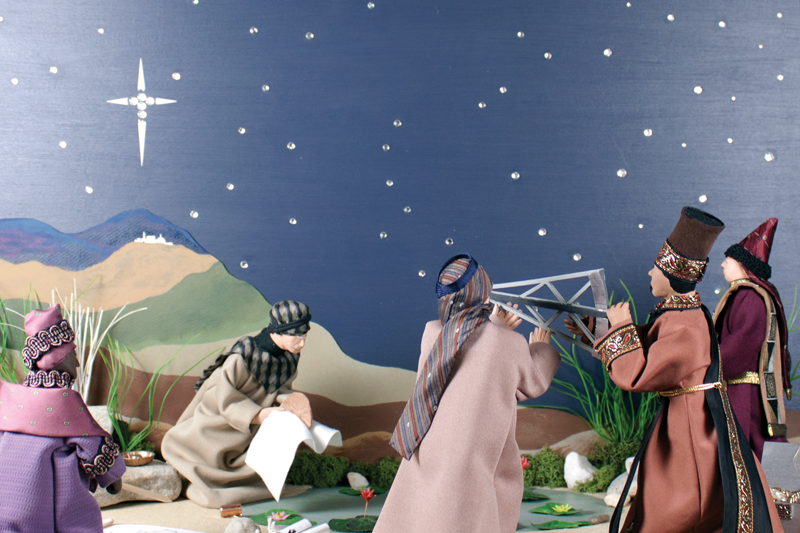Blogs

Magi from the East Enter the Nativity Scene
By Bridget Retzloff
On Jan. 6, many Christians celebrate the Feast of the Epiphany, when the infant Christ was revealed to the visiting wise men — the Magi — as God made man.
Although Gospel accounts of the Nativity do not specify the number of the Magi who came to pay homage to Christ, they do mention three gifts — gold, frankincense and myrrh — which is likely to have made the inclusion of three wise men standard in Nativity scenes. Often depicted as kings in sumptuous clothing and accompanied by attendants, the Magi have names in some traditions and are sometimes depicted as traveling from different parts of the world.
In some representations, the Magi arrive on different animals — Melchior from Europe on a horse; Balthasar from Asia on an elephant; Gaspar (sometimes Caspar) from Africa on a camel. The Magi follow a star to Bethlehem.
The Account from the Gospel of Matthew
The Gospel of Matthew provides this explanation of the Epiphany:
When Jesus was born in Bethlehem of Judea, in the days of King Herod, behold, magi from the east arrived in Jerusalem, saying, “Where is the newborn king of the Jews? We saw his star at its rising and have come to do him homage.” When King Herod heard this, he was greatly troubled, and all Jerusalem with him. Assembling all the chief priests and scribes of the people, he inquired of them where the Messiah was to be born. They said to him, “In Bethlehem of Judea, for thus it has been written through the prophet: ‘And you, Bethlehem, land of Judah, are by no means least among the rulers of Judah; since from you shall come a ruler, who is to shepherd my people Israel.’”
Then Herod called the magi secretly and ascertained from them the time of the star’s appearance. He sent them to Bethlehem and said, “Go and search diligently for the child. When you have found him, bring me word, that I too may go and do him homage.” After their audience with the king they set out. And behold, the star that they had seen at its rising preceded them, until it came and stopped over the place where the child was. They were overjoyed at seeing the star, and on entering the house they saw the child with Mary his mother. They prostrated themselves and did him homage. Then they opened their treasures and offered him gifts of gold, frankincense, and myrrh. And having been warned in a dream not to return to Herod, they departed for their country by another way. — Matthew 2:1-12 (NAB)
Pope Francis: ‘Admirabile signum’
In his apostolic letter on the meaning and importance of the Nativity scene, Pope Francis writes, “The Magi teach us that people can come to Christ by a very long route. Guided by a star, the wise men traveled far to pay homage to the newborn Jesus.” Francis says of their offerings, “These costly gifts have an allegorical meaning: gold honours Jesus’ kingship, incense his divinity, myrrh his sacred humanity that was to experience death and burial.”
Exhibit closes Jan. 12
As Epiphany marks the end of the Christmas season, Nativities and the Natural World will be on exhibit until Friday, Jan. 12. Selected Nativities are on exhibit throughout the year in the Marian Library’s Crèche Museum, on the seventh floor of Roesch Library.
— Bridget Retzloff is an assistant professor and the Marian Library’s visual resources librarian. She manages the Marian Library's art collection, including over 13,000 artworks in many different media.
